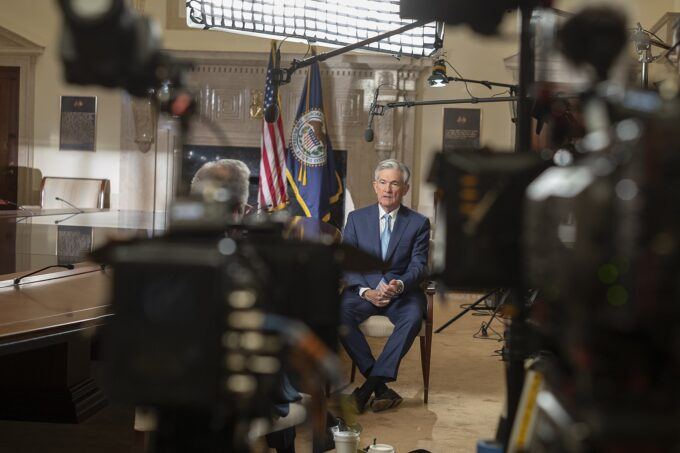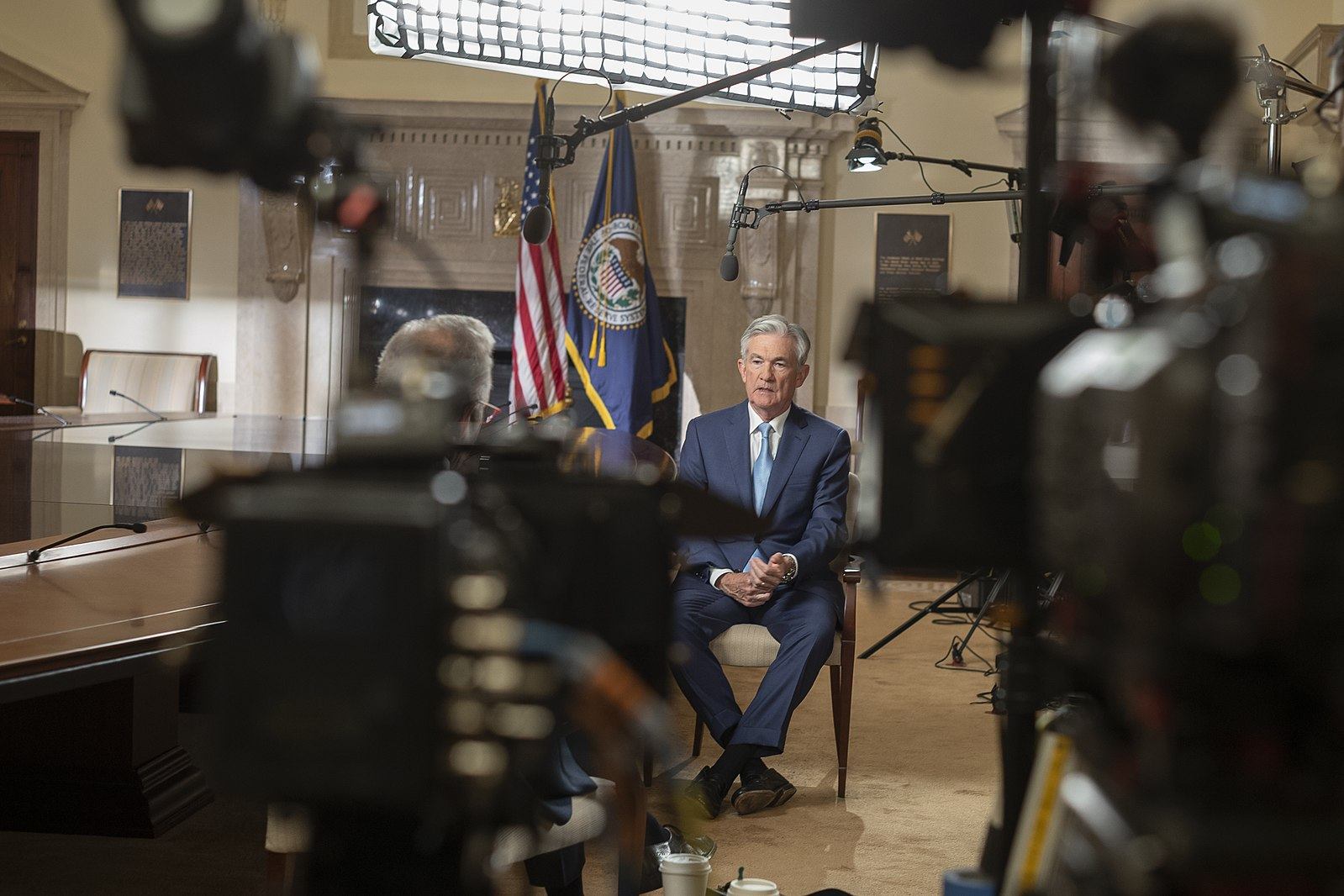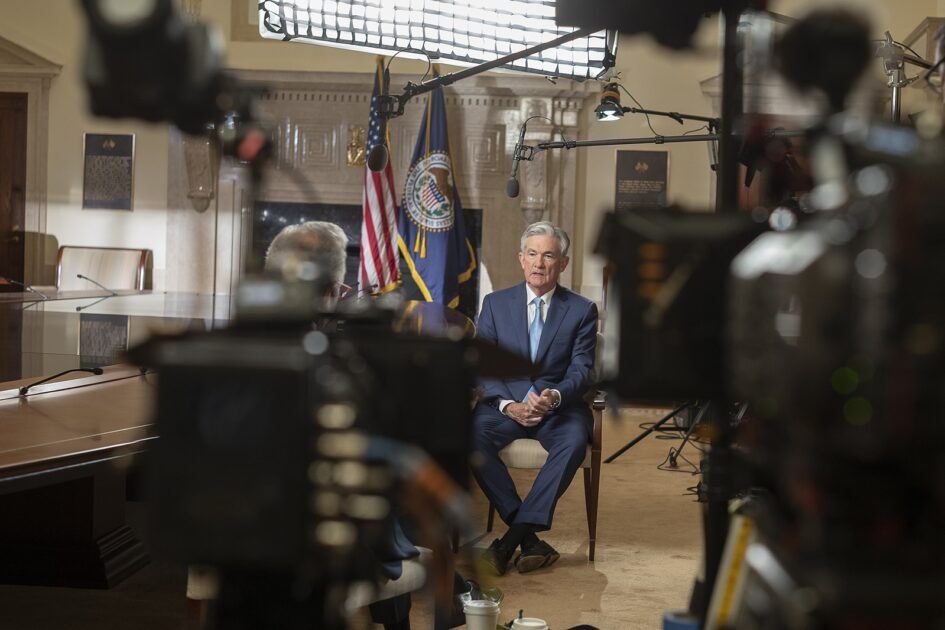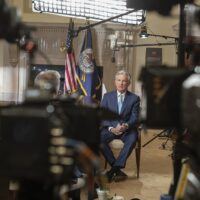Photograph Source: Federal Reserve – Public Domain
The stock market rallied big-time on Friday as Federal Reserve Board Chair Jerome Powell indicated that the Fed was likely to lower interest rates at its September meeting. In assessing whether a rate cut is appropriate, Powell was looking at the higher inflation caused by the Trump tariffs and trading it off against the signals of a weakening labor market from the monthly jobs reports and other data.
The key issue is, as posed by Powell:
“The question that matters for monetary policy is whether these price increases are likely to materially raise the risk of an ongoing inflation problem. A reasonable base case is that the effects will be relatively short lived — a one-time shift in the price level. Of course, ‘one-time’ does not mean ‘all at once.’ It will continue to take time for tariff increases to work their way through supply chains and distribution networks. Moreover, tariff rates continue to evolve, potentially prolonging the adjustment process.
“It is also possible, however, that the upward pressure on prices from tariffs could spur a more lasting inflation dynamic, and that is a risk to be assessed and managed. One possibility is that workers, who see their real incomes decline because of higher prices, demand and get higher wages from employers, setting off adverse wage–price dynamics. Given that the labor market is not particularly tight and faces increasing downside risks, that outcome does not seem likely.”
To summarize, there is no doubt that the economy is seeing higher inflation as a result of the tariffs. Powell is asking whether this is likely to be a one-time uptick in the inflation rate, which then settles back down (transitory), as long as tariffs are not raised further; or, if the uptick in inflation could spark more rapid wage growth as workers try to protect their real wage.
The “encouraging” assessment from Powell is that the signs of weakness in the labor market mean this is not likely. That means that workers will effectively have to eat the tariffs in the form of lower real wages.
That is good news from the standpoint of keeping inflation down, but it is bad news from the standpoint of workers trying to pay their bills. Powell is saying that he does not believe the labor market is currently strong enough for them to secure pay increases to cover the costs imposed by Trump’s tariffs.
I am inclined to agree with Powell on this point. The labor market does look like it is weakening. Workers are reluctant to quit their jobs and hiring has slowed. Also, it appears the rate of wage growth has slowed moderately: from around 4.0 percent in 2023 and 2024 to a 3.7 percent rate in the last three months compared with the prior three months.
The slowing for the lowest paid workers in hotels and restaurants seems to be even sharper, with the rate being just 2.5 percent. So, Powell is probably right that workers will likely have to eat the bulk of the inflation caused by Trump’s tariffs.
Unfortunately, a rate cut by Powell may not do as much to boost the economy as many hope. The short-term rate set by the Fed has little direct effect on the economy. Most of the impact of lower rates is from a reduction in longer-term rates, and especially the 30-year rate that matters for mortgages.
In the last year, the gap between the interest rate on 30-year bonds and 10-year bonds has grown considerably. At the end of August last year, the interest rate on 30-year bonds was roughly 4.15 percent, 30 basis points higher than the 3.85 percent rate on 10-year bonds. Currently it is almost 4.9 percent, 60 basis points higher than the 4.26 percent rate on Treasury bonds last Friday.
It is likely that concerns about higher inflation and/or Trump craziness is responsible for the growth in this gap. If this gap grows further, it raises the possibility that lower interest rates from the Fed will have a limited impact on the housing market and the economy.
This is where Trump’s bullying of the Fed has a perverse impact. Chair Powell has insisted that the Fed’s policy will be moved by the data, not hectoring from Trump, and I believe he has stuck to this position even if he does lower rates in September. FWIW, I don’t consider it at all inappropriate for the President and/or his economic advisers to publicly make their case on interest rates, but that case should be based on evidence, not intimidation. The Fed is not a church.
But when Trump threatens to fire Powell — or now Governor Lisa Cook — if they don’t lower rates, it undermines confidence in the United States as a safe place to invest money. The net effect could well be to raise the longer-term rates that matter most for the economy. But it is understandable that a 79-year-old man suffering from dementia wouldn’t understand this.
This first appeared on Dean Baker’s Beat the Press blog.
The post Jerome Powell’s Good News on Interest Rates Isn’t Necessarily. Good News appeared first on CounterPunch.org.
From CounterPunch.org via this RSS feed






